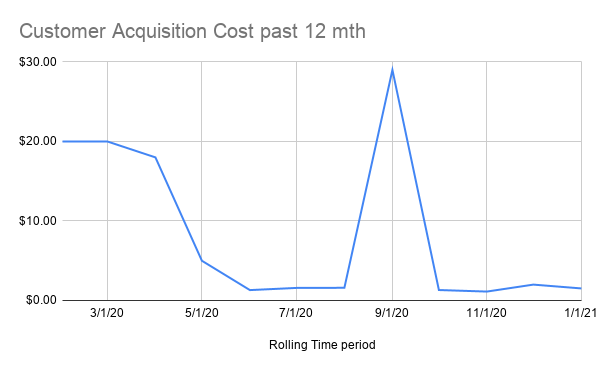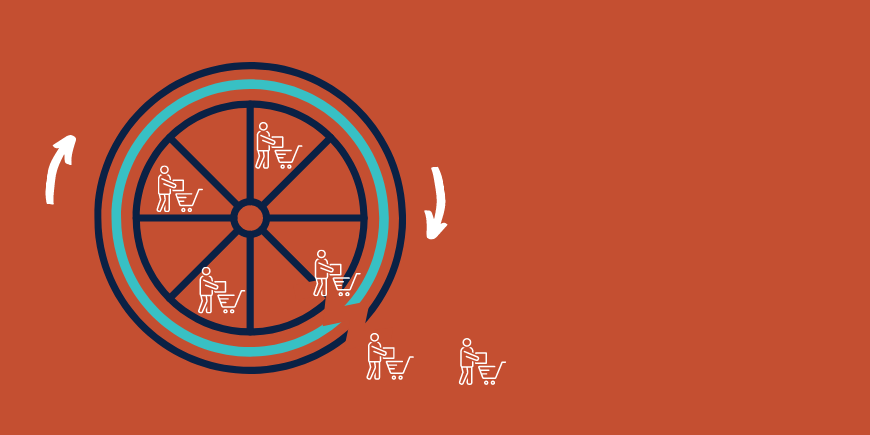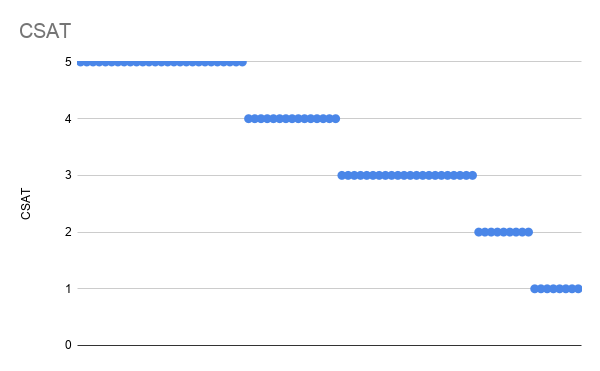|
These metrics provide clarity and accountability to marketing efforts greatly needed this year By Phillip Scroggin II | Managing Director, Sol Insights Marketing is frustrating. Yes, it's fun and creative, and (when it works) it's one of the best parts of running a business. The flip side is it seems overwhelming, chaotic, and out of our control. As business leaders, we feel much more control over other aspects of the organization - even our professional sales teams seem more manageable than our marketing efforts! From cost center to value driver For this reason, many SMB leaders see marketing as a cost center, rather than a value driver. Part of the problem is many of us can't "see" the results of our marketing efforts, and thusly, can't make adjustments to increase ROI. Many businesses last year pulled the classic recession strategy of reducing marketing communications, R&D, and product release while increasing prices to compensate for increased costs. "My customers will understand", they say. Cost centers should be cut during down times, right? As the Harvard Business Review concluded, this strategy will result in more customer churn and sinking profits. In tough times, we need to be reaching out with MORE service and value to our customers, not less. So here's the challenge: How do I effectively market my business to customers and target markets while avoiding bad investments which hurt cash flow (a recipe for closure)? Part of the solution (following a carefully developed core plan and related tactics and channels) is to track your efforts via Key Performance Indicators (KPIs) on your various channels and overall company. Here are ten you need to be measuring in 2021: Sales KPIs (the ones you are probably tracking now) There are debates in the business world about whether sales is an art or a science. I personally land in the group which believes sales to be an art...governed by science. Whether you are a sales leader or business owner, you are likely checking the foundational sales numbers which reflect financial performance. Sales are very stats-driven, from revenue and year-over-year comparison, to operating margin and bottom line profits. One essential KPI for businesses which deploy a professional sales force: pipeline value. #1. Pipeline Value If your business has a direct sales team, you must track pipeline every month, every quarter, and every year. In Tony Hughes' widely acclaimed sales book, Combo Prospecting, he states every sales pro should maintain 3-5x of their sales target/quota in pipeline value. While every step of the sale process should be optimized, if your sales teams are consistently opening up opportunities, the partnerships will inevitably follow. For the businesses which don't have a professional sales approach to finding new customers, wouldn't it be nice if there were similar metrics which could predict and govern performance for marketing? Example calculation: Target pipeline $ value = quarterly sales plan in $ x 4 #2. Reach People can't do business with you if they don't know you exist. This is one of the toughest challenges for small businesses to overcome. While we are trying to do "all the things", including social media, website, blogging, events, traditional advertising, press releases, and standing on the side of the road with really big arrows...are we keeping track of how many people get reached by our brand? You should be doing two things when it comes to marketing reach: 1. tracking total reach per time interval and 2. the reach which results in engagement and conversion (foreshadowing). On the digital side, you are continually without excuse for not tracking brand reach. Between Google Analytics, Facebook and Instagram Insights, and eCommerce reporting, there are plenty of tools to monitor reach. Even in traditional advertising there are ways to measure reach and engagement - it just requires a bit more work. Example calculation: Monthly reach = total social media post reach + website sessions + email opens + traditional reach #3. Engagement Rate The second of the three-step metrics, engagement is when the audience you reach then engages with your message/content. This could be Facebook comments, Instagram likes, retweets, newsletter link clicks, or booth visits at a convention. This metric can help you optimize your channel content by measuring which content drives interaction (good or bad). As a marketing leader, you can track engagement by channel and/or across all channels. A quick note, different marketing mediums are purpose-built for certain results. It's going to be more difficult to get engagement via a billboard ad versus an event, but that doesn't mean the billboard ad is a wasted effort. Example calculation: Monthly channel engagement rate % = monthly channel engagements/monthly channel reach #4. Conversion Rate Ultimately, all this marketing stuff is useless if it doesn't result in increased customers and profits. Conversion rate is an important KPI for evaluating what marketing activities are effective at moving the prospective customer to, well, a customer. Does a conversion have to be a sale? Absolutely not! The decision to buy is but one of three important stages in the buyer's journey. For activities designed to bring an unaware prospect into awareness of your brand, a conversion contributes to that goal (e.g., a Facebook boosted post which results in a page like+follow). A 'consideration stage' conversion might be a couple coming to your auto dealer's test drive event and then signing up for email announcements. In business, we often get obsessed with the "last-touch" activity which directly proceeds the sale, but just like closing in sales and scoring in basketball, these last touch conversions are built upon previous marketing investments. Example calculation: Monthly channel conversion rate % = monthly channel goal conversions/monthly channel reach #5. Customer Acquisition Cost aka CAC This metric is crucial for managing marketing effectiveness and efficiency - how efficient is your business at acquiring customers? If you are spending $300 per customer to sell one or two $50 items, your strategy might not be sustainable. CAC helps you keep marketing programs accountable and optimize budget. Like the other marketing metrics, this can be done per channel or across channels. Example calculation: CAC = sales and marketing investments in acquiring new customers/# new customers #6. Marketing Return-On-Investment aka mROI Ah yes, the elusive mROI. CEOs and CFOs have been hounding marketing leaders for decades to whip this stat out and clearly demonstrate the financial gains brought by marketing. While I'd like to be able to share a simple way to comprehensively demonstrate mROI, it's a bit more complicated than that. The calculation itself is simple, but factors like labor costs, lag time from initial investment to impact, and the inability of the stat to capture long-term impact make mROI challenging. Does this mean "don't track it"? No, it means you need to be thoughtful in how you calculate ROI of your marketing program and add the context of other metrics. Quick reminder: marketing investments have diverse purposes - some for brand building, some for short-term sales boosts, some for customer delight, and some for goodwill building. All these activities need to deliver Return-On-Investment, but not all returns will be significant profit boost in the same calendar year. My "get-started" advice: track total mROI on a rolling twelve or thirty-six month cycle and then measure mROI for new campaigns on an appropriate time cycle (most marketing efforts don't have instant sales impact). Example calculation: Marketing Return-On-Investment = (incremental financial value gained as a result of marketing investments - cost of marketing investments)/cost of marketing investments #7. Customer Churn Rate We've all heard the old business proverb that it's more expensive to acquire a new customer than keep an old one. While not all business is good business (see CLV below), an organization which can't build a loyal customer base is probably going to fail. Keeping track of your churn rate or customer attrition rate will help you uncover "under-the-surface" issues in your marketing, sales process, Customer Experience (CX) process, and more. Example calculation: Customer churn rate = (customers beginning of month - customers end of month)/customers beginning of month #8. Customer Satisfaction Score aka CSAT The customer is King/Queen, which is why every business book recommends the customer-centered approach to organization, and why every business in existence will tell you they are customer-centered. While measuring your customers' experience via KPIs won't single-handedly make you the Chick-fil-A of your market, it is a good start to progress beyond your assumptions. To win in today's economy and achieve long-term success, companies must invest in Customer Experience (CX). The approach is recession-proof, and the two most popular metrics for tracking CX are CSAT and NPS. CSAT is a simple metric for customers to self-report their satisfaction with your service using a multi-point scale (usually 5-10). Managing service-delivery to ensure your customers are satisfied will help you reduce churn; however, people expect satisfaction. We are seeking delight that produces loyalty. Example calculation: CSAT %= (# satisfied customers (4 and 5 on 5 point scale)/ # survey responses) x 100 #9. Net Promoter Score aka NPS Net Promoter Score (NPS) is a very popular stat for marketers across the globe. You've likely been asked how likely you are to recommend a product/service you purchased to a friend on a 10 point scale. This KPI is designed to help capture how loyal customers are to your brand and how much positive and negative buzz you are getting amongst the customer base. In general, a positive score is good because you have more promoters than detractors - a negative score indicates you need to shore up your CX now. Moreover, scores above +50 are considered excellent and +70 are world-class. Example calculation: NPS = % promoters - % detractors #10. Customer Lifetime Value Which one is better: a customer who spends $100 with you over one year or a customer who spends $800 over three years? Stupid questions aside, Customer Lifetime Value is an important metric for managing how much value you are able to deliver to customers over the life of their relationship with your business. This KPI can help you optimize every aspect of the Marketing Matrix and support the building of lasting, profitable relationships. There are a variety of ways to calculate CLV, so give some thought to your business model first, then track over time as your customer base and marketing strategies change. Example calculation: CLV = 12(avg. customer value per month) x average customer lifespan Grow smarter - putting the science into marketing When I first started my business, I spoke with a local retailer about his marketing strategy and program. He gave a classic response: "I know about 50% of my marketing is working. I just don't which 50%." Industry giants got even stronger in the Coronavirus recession while small businesses suffered. Consumers right now are less brand loyal and slower with their wallet, the marketplace is changing more rapidly than ever, and the economy is becoming more border-less. Simply put, small and mid-size organizations have to work smarter in 2021 - your customers won't take excuses. In strategically aligning unique value to the right people, business leaders need to deploy strategic and tactical marketing as value drivers, not cost centers. Since you can't manage what you can't measure, it's high-time you start tracking some Key Performance Indicators. Comments are closed.
|
AuthorWrite something about yourself. No need to be fancy, just an overview. Archives
March 2023
Categories
All
|












 RSS Feed
RSS Feed
